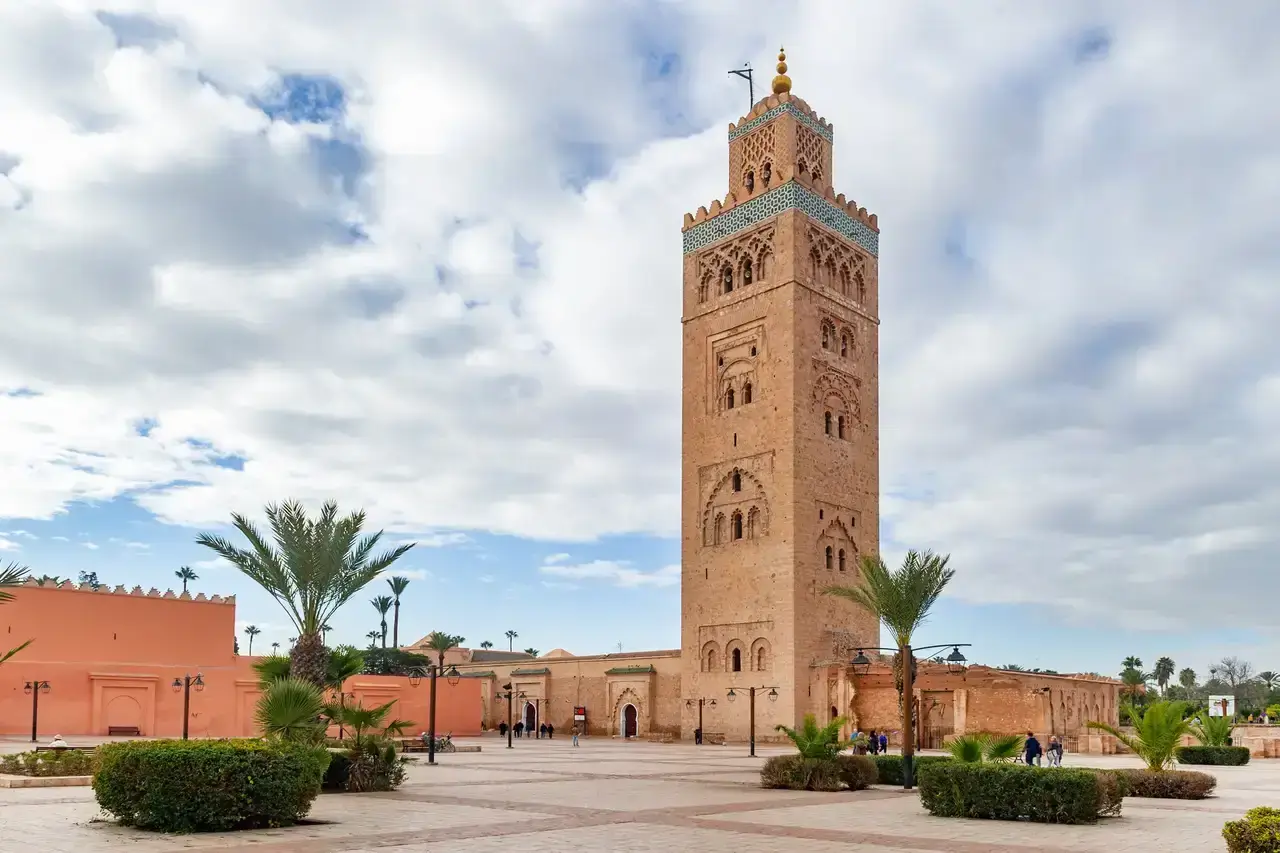
The Koutoubia Mosque, also known as the Kutubiyya Mosque, is one of the most famous landmarks in Marrakesh, Morocco. Here are some key details about the mosque:
Historical Significance
- Construction: The mosque was originally built during the reign of the Almohad Caliph Yaqub al-Mansur in the late 12th century, around 1158–1195. It is a prime example of Almohad architecture.
- Name: The name “Koutoubia” is derived from the Arabic word “kutub,” meaning “books.” It reflects the mosque’s historical role as a center of learning and scholarship, as it was situated near a bookseller’s market.

Architectural Features
- Minaret: The Koutoubia Mosque is renowned for its impressive minaret, which stands about 77 meters (253 feet) tall. The minaret is a quintessential example of Almohad architecture and has influenced the design of several other notable minarets, including the Giralda in Seville, Spain, and the Hassan Tower in Rabat.
- Design: The mosque features a rectangular prayer hall with a large central courtyard. The prayer hall is adorned with intricate stucco work, geometric patterns, and decorative tiles.
- Columns and Arches: Inside the mosque, you’ll find rows of columns and arches that create a spacious and harmonious interior. The arches are supported by intricately decorated capitals.
Cultural and Religious Importance
- Prayer Services: The Koutoubia Mosque is an active place of worship and a central religious site for the people of Marrakesh. It serves as a major center for Friday prayers and other Islamic ceremonies.
- Historical Influence: The mosque’s design has had a lasting influence on Islamic architecture, particularly in the Maghreb region and Spain.

Visitor Information
- Access: The Koutoubia Mosque is located in the heart of Marrakesh near the Djemaa el-Fna square. While non-Muslims are not permitted to enter the mosque, visitors can admire the exterior and explore the surrounding gardens and courtyard.
- Surroundings: The mosque is situated in a vibrant area with markets, gardens, and cafes, making it a central feature of Marrakesh’s historic district.

Restoration and Preservation
- Renovations: Over the centuries, the mosque has undergone various restorations and repairs to preserve its historical and architectural integrity. The most significant restoration occurred in the 20th century.
Overall, the Koutoubia Mosque is a significant architectural and cultural landmark in Marrakesh, reflecting the grandeur of Almohad architecture and playing an important role in the religious life of the city.
Was this helpful?
0 / 0







